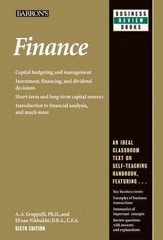
The case of the Symphony Orchestra adapted from Nagle and Holden Consider the problem faced by the business manager of a symphony Orchestra. The musicians usually perform two Saturday evenings each month during the season with a new program for each performance. It incurs the following costs in addition to the fixed overhead costs of 3000 euros per month (no matter how many concerts they performed). rehearsal costs for 1 new concert 4 500 euros 1 performance costs (hiring a concert hall) 2 000 euros variable costs (programs, tickets) 1 euro per person The business manager is concerned about very thin profit margin. He has currently set ticket prices at 10 euros. If he could sell out the entire 1100-seat hall, total revenues would be 11 000 euros and total costs 9 100 euros, leaving a healthy 1 900 euros profit per one concert. Unfortunately, the usual attendance is only 900 patrons, resulting in an average cost per ticket sold of 9,89, which is close to the 10 euros admission price. With revenues of just 9 000 euros per performance and costs of 8 900 euros, total profit per performance is only 100 euros. The business manager does not believe that a price increase would solve the problem. A higher price would reduce attendance more, leaving less revenue per performance than the orchestra earns now. Consequently, he is considering three proposals designed to increase profits by reaching out to new markets. Two of the proposals involve selling seats at discount prices. The three options are: 1. A "student rush ticket priced at 4 euros and sold to college students one-half hour before the performance on a first-come, first-served basis. The manager estimates he could sell 200 such tickets to people who otherwise would not attend. Clearly, however, the price of these tickets would not cover even half the average cost per ticket. 2. A Sunday matinee repeat of the Saturday evening performance with tickets priced at 6 euros. The manager expects he could sell 700 matinee tickets, but 150 of those would be to people who would otherwise have attended the higher- priced Saturday performance. Thus net patronage would increase by 550, but again the price of these tickets would not cover average cost. 3. A new series of concerts to be performed on the alternate Saturdays. The tickets would be priced at 10 euros, and the manager expects that he would sell 800 tickets, but that some tickets (100) would be sold to people who would attend the new series instead of the old one. Thus net patronage would increase by 700. Which, of these proposals should the manager adopt? The case of the Symphony Orchestra adapted from Nagle and Holden Consider the problem faced by the business manager of a symphony Orchestra. The musicians usually perform two Saturday evenings each month during the season with a new program for each performance. It incurs the following costs in addition to the fixed overhead costs of 3000 euros per month (no matter how many concerts they performed). rehearsal costs for 1 new concert 4 500 euros 1 performance costs (hiring a concert hall) 2 000 euros variable costs (programs, tickets) 1 euro per person The business manager is concerned about very thin profit margin. He has currently set ticket prices at 10 euros. If he could sell out the entire 1100-seat hall, total revenues would be 11 000 euros and total costs 9 100 euros, leaving a healthy 1 900 euros profit per one concert. Unfortunately, the usual attendance is only 900 patrons, resulting in an average cost per ticket sold of 9,89, which is close to the 10 euros admission price. With revenues of just 9 000 euros per performance and costs of 8 900 euros, total profit per performance is only 100 euros. The business manager does not believe that a price increase would solve the problem. A higher price would reduce attendance more, leaving less revenue per performance than the orchestra earns now. Consequently, he is considering three proposals designed to increase profits by reaching out to new markets. Two of the proposals involve selling seats at discount prices. The three options are: 1. A "student rush ticket priced at 4 euros and sold to college students one-half hour before the performance on a first-come, first-served basis. The manager estimates he could sell 200 such tickets to people who otherwise would not attend. Clearly, however, the price of these tickets would not cover even half the average cost per ticket. 2. A Sunday matinee repeat of the Saturday evening performance with tickets priced at 6 euros. The manager expects he could sell 700 matinee tickets, but 150 of those would be to people who would otherwise have attended the higher- priced Saturday performance. Thus net patronage would increase by 550, but again the price of these tickets would not cover average cost. 3. A new series of concerts to be performed on the alternate Saturdays. The tickets would be priced at 10 euros, and the manager expects that he would sell 800 tickets, but that some tickets (100) would be sold to people who would attend the new series instead of the old one. Thus net patronage would increase by 700. Which, of these proposals should the manager adopt







